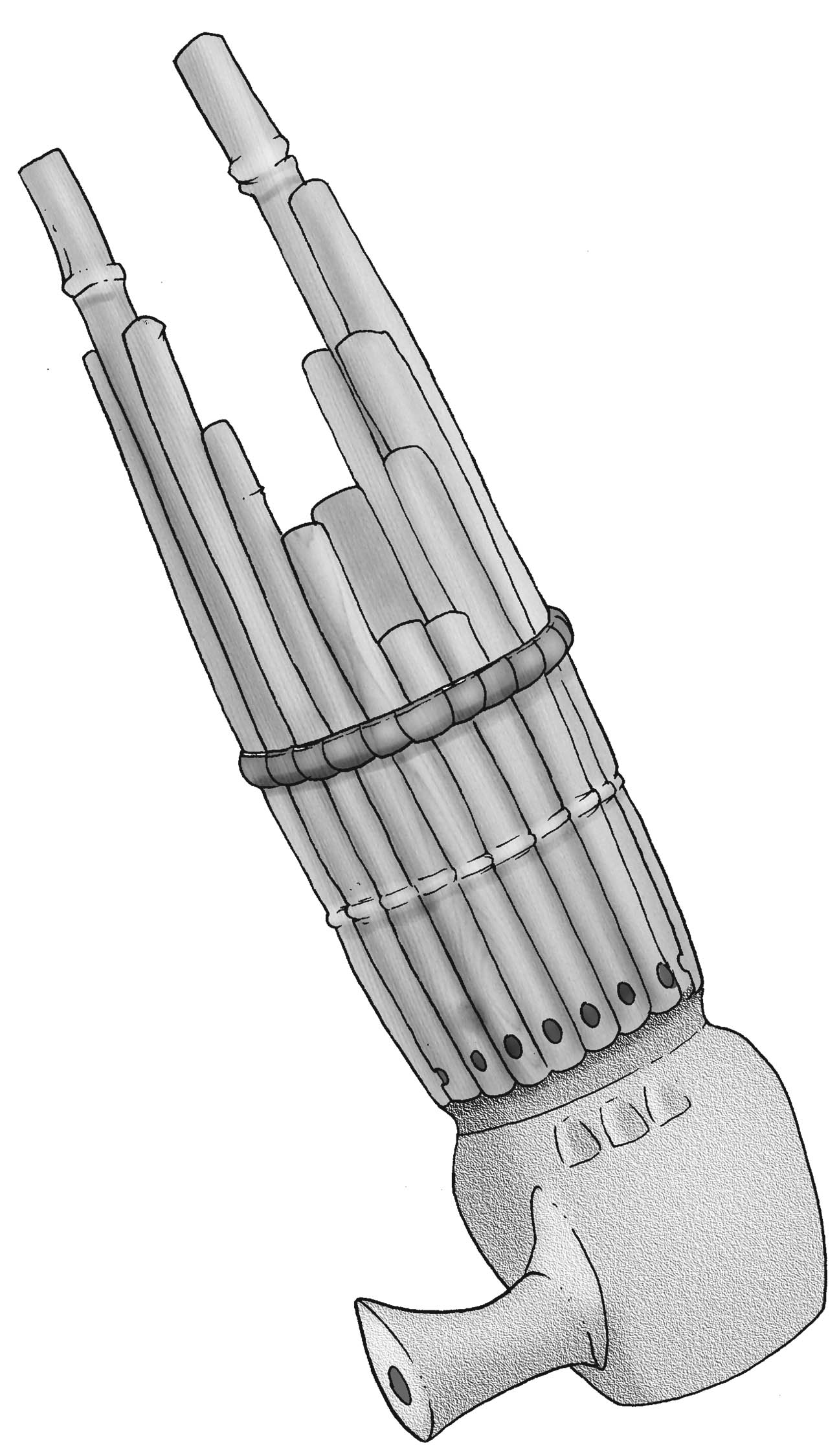 SHENG
SHENGShort-answer quiz
 SHENG
SHENGType your answer, then press "Check". If you need help, you can click on the "Hint" button to get a free letter.
Probably the most familiar type of Asian mouth organ to most people is
the Chinese sheng, its most common form having 17 pipes of varying lengths
forming an incomplete circle around a windchest of either carved wood
or metal. Tradition credits the invention of the sheng to various semi-mythical
characters such as the Emperor Huang Ti or the Empress Nu Qua in the third
millennium BCE, its shape said to have been inspired by the phoenix at
rest on its nest (with the shape of the Chinese panpipes paixiao representing
the phoenix in flight). The word sheng has become something of a standard
term for mouth organs, however the earliest written descriptions (as far
back as the fifteenth century BCE) use the name he to describe a small
mouth organ, chao to describe a medium sized one and yu to describe a
somewhat larger one, all having varying numbers of pipes often arranged
in crosswise rows. Later the seventeen pipe circular arrangement became
more or less standardised, with the name yu denoting an instrument primarily
used for melodic purposes and the name sheng denoting one used for mainly
harmonic purposes. These older instruments often had much longer mouthpieces
than those used on modern ones - it is suggested that this was so the
emperor could see the faces of the female court musicians that serenaded
him!
Of the seventeen pipes of the typical sheng, traditionally three or four
were blocked and had no reeds, however by the mid-twentieth century these
silent pipes were often given reeds to add some chromatic notes to its
traditional diatonic scale. Also larger instruments with more pipes started
to be produced and resonators added to give more volume. New variations
on the traditional sheng have been invented, such as the keyed sheng or
jiajian sheng. As its name suggests, instead of the notes being selected
by the player's fingers, there is a system of keys or buttons which open
and close the ends of the pipes. The most recent versions of this instrument
have 37 pipes, covering three fully chromatic octaves. Larger ensembles
sometimes use the da paisheng, a large floor-standing organ-like instrument
and the somewhat smaller baosheng, supported by a stand or held in the
player's lap.
The sheng was introduced into Korea during the Three Kingdoms period (57
BCE to 668 CE), where it became known as the saeng or saenghwang. Typically
the saenghwang has seventeen pipes, with one of them being silent. It
is not a commonly featured instrument in Korean classical music, although
it is sometimes used in duet with flute or dulcimer.
By the sixth century CE, the Chinese mouth organ had also spread to Persia,
where it was known as mushtaq sini, bisha-i mushta and later as chubchiq.
The instrument is depicted in several illustrations from that period,
but seems not to have entered the mainstream of Persian music.
Around the eight century CE, the Chinese presented a gift of three sheng
and three yu to the Japanese court. The yu fell almost immediately into
disuse, but the sheng took root and became known by the Japanese name
sho. Slimmer and higher pitched than the typical sheng, the sho has seventeen
pipes of which two are traditionally silent. Its most common application
is in playing long sustained tone clusters to accompany gagaku performance,
but in recent years some composers have started to exploit the melodic
capabilities of the sho, the late John Cage being one of them.
Various specimens of sheng also made it as far as Europe, where they are
said to have been one of the main inspirations for the development of
the Western free reed instruments.